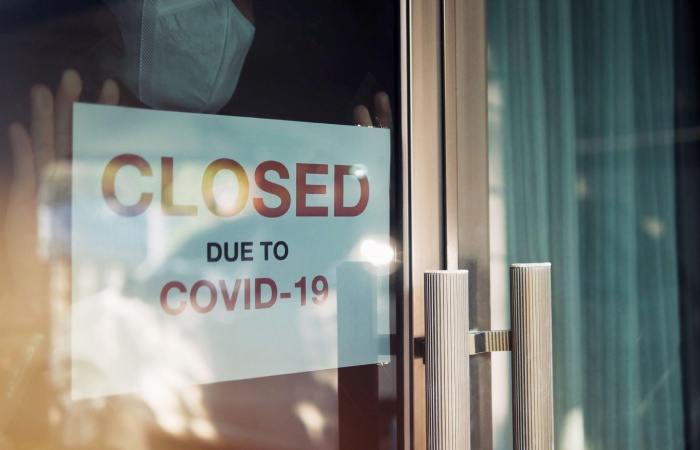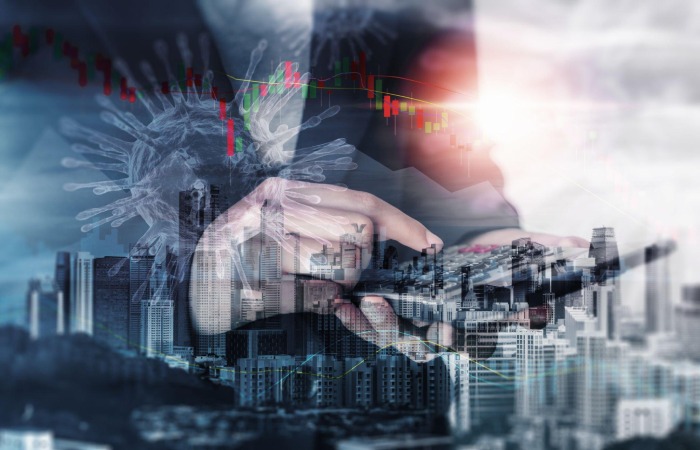Table of Contents
How has the Pandemic Affected Customer Experiences

Almost 2 years after the Covid-19 outbreak, it is safe to say that it has taught us A LOT. It has affected almost all areas of life. And, of course, that goes for customer experience (CX) too.
Although CX has always been integral to a company’s success, the pandemic has shown the importance of investing in customer experience. As people transitioned to digital channels, it became critical for brands to serve customers in new ways that suited their needs. It also gave them new ways to better connect with their customers.
Looking to the post-coronavirus world, marketers must ensure they keep the customer experience top of mind, meet the highest expectations, and cater to changing tastes. Let’s look at the key CX trends that COVID-19 has inspired.
Digitizing the Customer Experience

One thing is for sure, the pandemic has prompted both brands and consumers to have deeper relationships with technology, and many marketers recognize that it will play a progressively important role in shaping the customer experience.
Consumers now do more online than just shopping for groceries, books, or clothes. People have moved to low-touch digital platforms in other categories. Businesses naturally had to adapt and quickly realized they needed to use digital technologies to engage customers more effectively.
However, when it comes to digitizing the customer experience, a few things need to be done right. Customers should have secure and easy access to their accounts and seamlessly display all the information they need. Therefore, companies must make the customer experience simple, seamless, and engaging. They must orchestrate and integrate customer interactions across different channels. In addition to traditional channels such as voice calls, SMS, and email, consumers increasingly use other digital platforms such as social media, chat apps, and video.
Personalization Increases Customer Loyalty
As the pandemic caused disruptions in the global supply chain, consumers had to try new brands, purchase options, or purchase methods. If they couldn’t find their favorite product, they wouldn’t hesitate to switch to a competitor. This means that customer loyalty is required. Today’s consumers choose brands that are convenient, reliable, and have their best interests in mind. So it becomes clear that companies must rethink their strategies to strengthen customer loyalty.
One method to do this is to offer highly personalized customer experiences by providing them with products, offers, and communications that are especially relevant to them! Another way is to personalize multiple interactions across touchpoints across channels and ensure your experience is seamless and consistent.
Simply put, the companies that use analytics and data to deliver personalized omnichannel experiences are the ones that will attract new followers and keep old ones.
Analyzing Customer Experience
Customer experience analysts state that companies face huge challenges as brand loyalty drops but reassure that good customer service will continue to reap rewards.
Brand loyalty has declined significantly over the last two years. Still, Feefo analysts studying consumer patterns from 2021 into 2022 are making it clear that all is not lost in their end of year report into emerging CX trends. Customer retention strategies may have been tested to their limits. Still, several recent reports break down how exactly businesses can respond to adverse conditions and retain customers despite the impact of the pandemic.
Their findings suggest that, while brand loyalty is more complex than ever to earn due to changing customer behavior following Covid-19, good customer experience can “lead to a 300% increase in annually recurring revenue (ARR)”.
Pandemic Affected Customer Experiences

According to their data, online shopping is one huge factor in wavering brand loyalty. At the start of the pandemic, many countries implemented lockdowns and restrictions that closed bricks-and-mortar shopping sites. The only way for consumers to purchase products became online via the internet. In the early lockdowns, many businesses found themselves with service and customer experience software that wasn’t designed for the brave new world we had found ourselves in.
As Per the Study Pandemic Affected Customer Experiences
One study claims that during the weeks and months following the initial lockdowns of 2020, businesses across industries made a 10-year leap forward in their customer experience technology. The huge surge in online shopping, which was an already growing mode of consumer behavior, didn’t change customer experiences and expectations but it definitely refined them.
Brand fatigue has increased in line with people’s ability to quickly assess where they will get the best value for money, as they shop online and are just one click away from brand reviews. Cost is no longer a pripirty, with 86% of online shoppers willing to pay more if they enjoy their customer experience. For this 86% of customers, cheap pricing simply means that you get what you pay for in terms of experience. For many people, particularly younger consumers, this means being able to engage with a company via their preferred channel – be that Whatsapp, social media, text or a website’s chat app. But it doesn’t stop there. Expectations are that it should be possible to engage via any preferred platform in that moment – with the understanding that this might change as a consumer goes about their day.
Pandemic Changed the Days
The pandemic has changed what a typical “day” now looks like for many reasons. For the millions who changed their jobs due to the pandemic, this might mean they can or can’t access the same channels as they would have before during their working day. Remote working, home working, and working while schooling have all also had an impact on how consumers spend their time and therefore which channels they do or do not have access to. It’s clear from the numbers that customer expectations tally with this, as McKinsey states that 80% of customers expect “frictionless” and “seamless” experiences across channels as they shop.
Feefo’s report on business success in 2021 and new trends for 2022 makes it clear that throughout the pandemic, companies that worked hard to adapt their technology and customer experience best practice did well, whereas companies that were more static in their approach struggled to retain their share of the market.
CX means Human-Centric
“CX” is a term that many professionals have heard of, even outside the customer service world, but “DX” – or the ‘Digital Experience’ is the emerging term that perhaps captures the zeitgeist better. As the continuing impact of the pandemic leads to increasing numbers of digital interactions, the 86% figure seems to suggest that the quality of those interactions is becoming more important to people. Industry thought leaders cited in Feefo’s report emphasise that DX cannot be a de-humanising journey for customers.
Business Values in Pandemic Pandemic Affected Customer Experiences
Looking forward into 2022, analysis suggests the growing importance of a business’s values. Their level of sustainability, and the authenticity of any “brand activism”. Millenial and Gen-Z consumers consistently report that they will pay more if this means less environmental impact, social impact and a smaller carbon footprint. This indicates that there is an emotional level of investment that Millenial and Gen-Z consumers are increasingly willing to have in the brands they choose – if these brands conduct themselves appropriately.
But the report claims that it’s not just these top-line communication that will influence a new. More accountable era of brand over the next few years. While data privacy has created its own headlines due to leaks and cautionary tales of mis-use, once a company has data. They will increasingly expected to use it to create highly-personalised customer experiences – primarily digital. High levels of personalisation have never been so possible, and they are already creeping into our daily lives.
Who doesn’t now expect Netflix to keep and bookmark shows across channels? Who doesn’t look at the recommendations to find something new to watch with the expectation that you will see shows that are similar to others you love? This is a key example of a business already using personalisation in a way that feels essential to the product. The pandemic has thrown everything up into the air. But businesses that keep meeting the expectations and needs of their customers will continue to do well – just as they always have.
